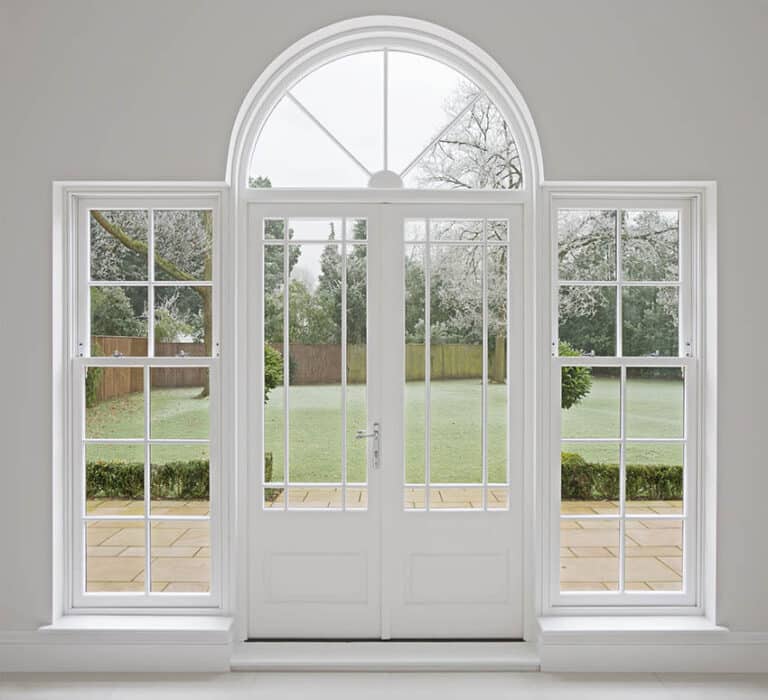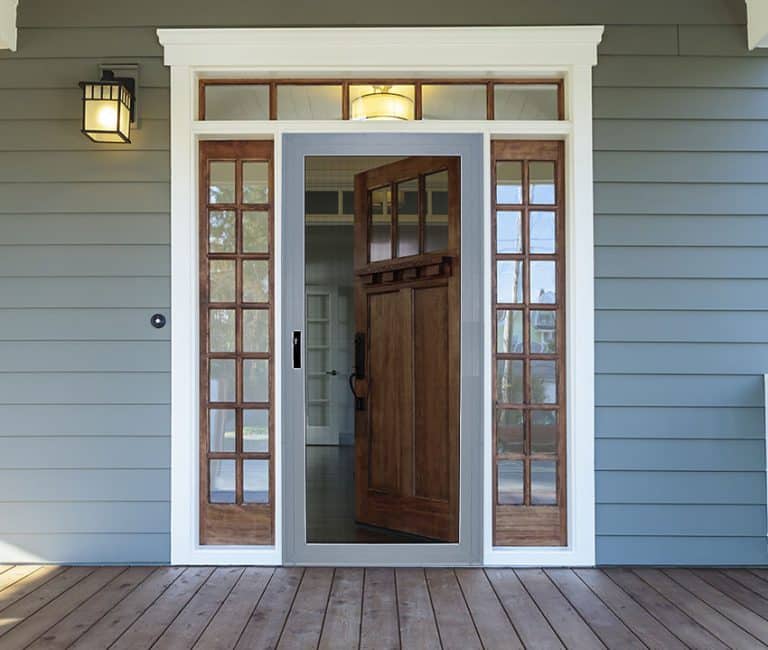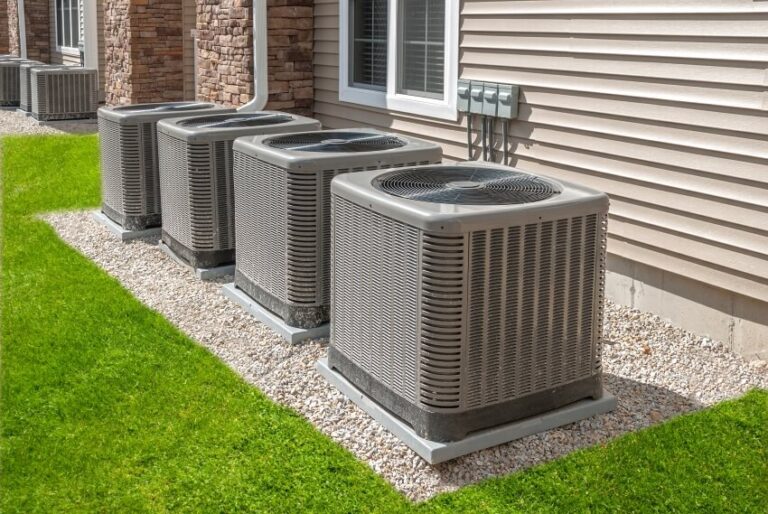Water Softener Alternatives & How They Work
Below you’ll find the best water softener alternatives including reverse osmosis, TAC, salt free water conditioner, electromagnetic water treatment, EIP and more.
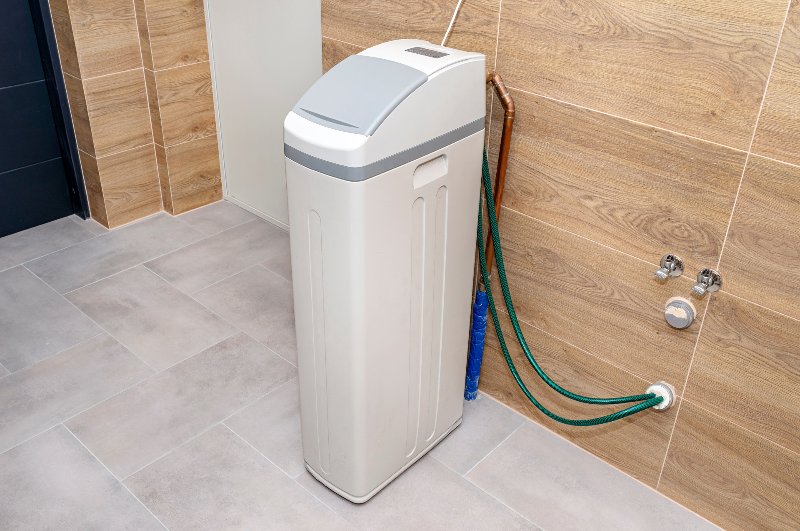
For starters, water softeners can be a bit on the expensive side. It’s also been said that they can at some point harm the environment. Water softeners also happen require periodic maintenance for them to run smoothly in the first place. They need to get checked regularly or you might end up with some costly repairs and eventual replacements which will cost more money.
Moreover, there’s also the constant pain of having to carry bags of salt from one place to the other. This is mainly because water softeners require them heavily. Because of the issues that come along with water softeners, the sensible solution would be for you to go ahead and look for alternatives. Here are some of the best alternatives to consider:[toc]
Reverse Osmosis (RO)

RO units or systems are also highly effective when it comes to removing chloride and fluoride, which are known impurities in hard water.
You get to save up on money because it would mean that you wouldn’t have to shell out so much money on bottled water anymore. This is because of the fact that the kind of water that an RO system produces is pretty much the same quality as with your bottled water in the stores.
These systems do not use electricity or gas at all. This can help you save up on a lot of money because you get to cut down on a lot of your utility bills.
And because of the fact that it doesn’t need a power source in the first place, it is something that you will be able to easily bring with you during your camping trips or for certain occasions wherein you have go off grid.
It’s also important to note that a majority of water softener alternatives may consume more water than an actual RO system or unit. They are usually equipped with multiple filters that are meant to trap pathogens as well as other impurities that may be in the water.
An RO system isn’t like that. It only requires a filter change once a year whereas other systems may require filter changes 3 to 4 changes in a year. RO systems are great at not just removing solid particles in the water. They can also remove unpleasant tastes from your local water system and then remove any funny smells that may come along with them.
Chlorinated water, which is common for municipal water or water coming from your local sources, may cause the unit to become faulty over time. This results to expensive repairs or worse, replacements.
RO systems operate slowly. It means that if you want to get lots of water straight away because there’s a need for you to leave your home early, it may not always be the best choice for you as a water softener alternative.
Periodic cleanups can also turn out to be a bit of an issue. It requires a lot of care and maintenance. If you end up forgetting to get your unit sanitized, it can end up being a breeding ground for mold and mildew.
It can end up polluting your water overall. And this will completely defeat the purpose of why you’re getting a water softener alternative in the first place.
You will also need to get the filter changed. This can come along with a huge price tag that can really cause a strain on your budget. You need to be prepared to pay extra for the accessories with an RO system in place.
Template Assisted Crystallization (TAC)

It doesn’t require a lot of electricity. It doesn’t need any chemicals added on to the water. If you want to make sure that it’s always kept in working order, you only need to make sure that the unit was properly installed and that you keep it clean.
How a TAC system works is that it technically uses ceramic polymer balls to dissolve the minerals in the water. When the polymer balls or beads meet the salt, they convert into crystals. The salts then disappear into the water.
Essential minerals such as magnesium and calcium though will stay in the water. This is great because they play important roles in the human body.
Traditional water softeners would usually remove or destroy these minerals so that’s one of the main advantages of a TAC system. And because it doesn’t use toxic chemicals, this type of water treatment is considered “green”.
TAC systems also don’t use electronic control valves. These valves are expensive and are usually the ones that drive the prices up for water softeners in general. This isn’t an issue with a TAC system which is why it is normally a more affordable option compared to a water softener.
There isn’t any backwash to be expected when the water has been treated with a TAC unit. Hence, there wouldn’t be any need at all for you to connect it to a drainage or any space that will technically drain it out because the backwash is relatively nonexistent.
At the same time, there isn’t any brine discharge. This means that you not only get to save money from having lower water bills, you also have fewer repair costs in the future because this unit is extremely sturdy and durable. it will not change taste and smell of the water as well, so that’s a definite plus right there.
It’s recommended for you to use carbon alongside a TAC unit. This is because of the fact that chlorinated water coming from your local water supply could eventually lead to chlorine buildup in your TAC system.
Iron buildup in the unit can turn out to be a problem as well. Since iron is a metal element, it can cause substantial impairment or damage to the TAC unit.
In order for you to get rid of any iron buildup in your unit, you will need to use a screen or some type of sifting tool. Use this to manually extract the iron elements or particles in the water before it reaches the actual system.
Salt Free Water Conditioner
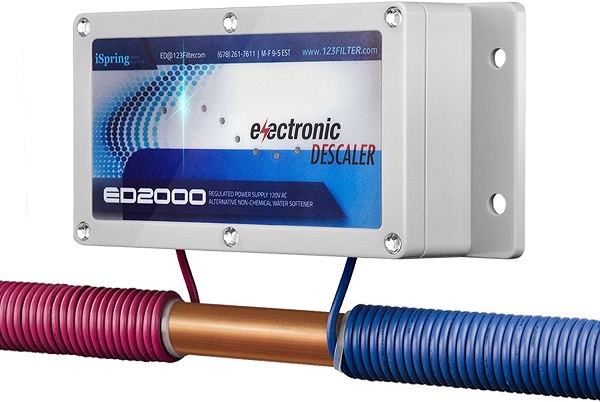
This is a water softener alternative that’s meant to make your water a little more resistant to limescale buildup and to make it easily removable in the event that a buildup does happen or take hold.
Compared to the other alternatives that work by removing the materials that are causing the water to be hard, a salt free water conditioner doesn’t really do that. Instead, it changes the chemical makeup of the minerals. For example, it has an anti scaling resin that attacks magnesium and calcium.
Once the resin interacts with the water, it becomes softer in the process. This conditioner is oftentimes paired up with a carbon filter so reduce any tastes and smells associated with chlorine and other contaminants in the water.
You also get to extend the life span of your plumbing system with this type of water softener alternative. See the pros and cons of salt-free water softeners here.
Electronic Descaler

An electronic descaler is a unique water softener alternative because instead of using brine, it employs nanotechnology. This is aimed to change the actual nature of the water that flows through the unit.
With the use of magnetism, it can end up changing the chemical makeup of the water. It means that it will leave the salts inactive because they are placed in a suspended form.
Hard water is usually due to the concentration of metals in the water, such as magnesium, calcium, sulfur, and so on. It can hurt your skin, damage your pipes, stain your clothes, ruin your appliances at home, and cause so many more problems.
This is due to the limescale that has been produced because of the presence of the metals in the water. It can clog your showers and your faucet spouts and affect the water flow. An electronic descaler will remove the chalky residue in the water, making it clearer and taking better care of your fixtures, your skin, and your overall water quality.
This unit can only treat running water. Other water softener alternatives can treat even Stillwater. If you plan to keep water in some type of tank or reservoir, you might need to think twice before you opt for an electronic descaler.
An electronic descaler also can’t work on extremely hard water. In order for this water softener alternative to be effective, the maximum hardness in the water should only be at around 75 grains per gallon and nothing more than that.
Electromagnetic Water Treatment
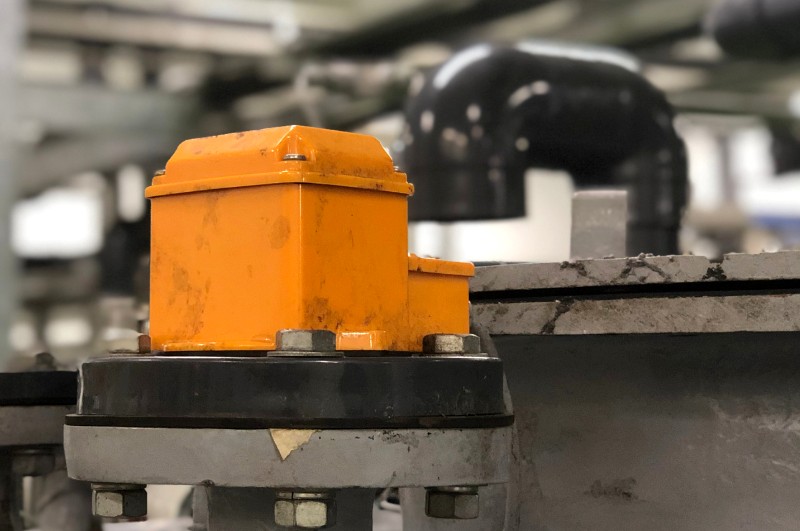
What’s so great about this particular method or treatment is that the water is purified accordingly without having to dump any harmful chemicals or substances into the water. It’s a simple but brilliant solution to producing potable or drinkable water at the end of the day.
Another element that factors into the use of electromagnetic water treatment is the fact that the calcium content in the water isn’t technically stripped from it. Calcium is important to the human body.
It is one of the main or primary needed minerals for survival and for a healthy body all throughout. Some water softening mediums would convert calcium into sodium whereas this particular method pretty much leaves calcium in the water as it is. In its natural state.
Electromagnetic water treatment units also do not need to be frequently refilled with salt. It’s very effective in keeping the water clean enough for it to be potable but at the same time doesn’t really require much in terms of upkeep and maintenance to make sure that it’s always in an operational state. This makes is a really great entry level water softener alternative especially if you happen to be in a budget and don’t really want to splurge that much initially.
Units that use this method are well liked because they aren’t too noisy to operate. They take unpleasant fumes and other odors off of the water.
In some instances, they even get rid of limescale which is great at keeping limescale buildup at bay in your household plumbing without stripping it too much of its basic minerals that can actually be helpful in keeping you healthy. It also doesn’t use chemicals or brine or anything like that.
A downside to this water softener alternative though is that you can use it and place it because any electric appliances at home as this may affect how they work. This is because there may be fluctuations in the magnetism in that area because there are other sources of electricity involved.
You also need to make sure that the water is fairly close to the magnetic area. The moment the water gets moved out of the magnetic area, it will regain its hardness at a timeline of 28 hours or so. This is why water that gets purified out of this is recommended to be consumed right away.
Capacitive Deionization
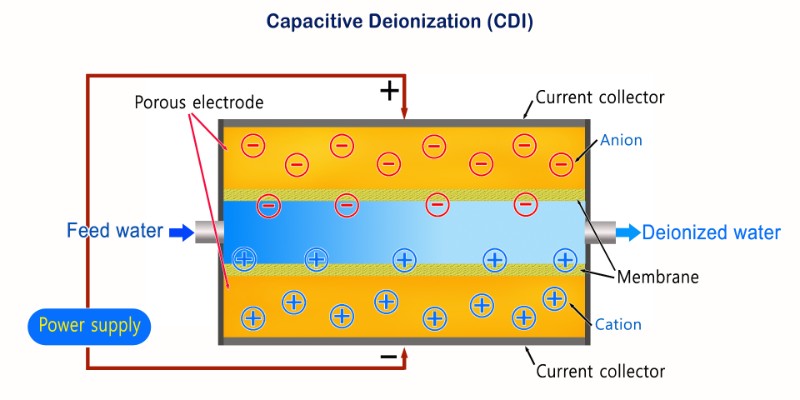
This ultimately leads to reducing the hardness of the water. It’s a very affordable and environmentally friendly method in softening your water up.
Capacitive deionization is so effective that it is even employed in pools as a substitute for chlorine treatments. It can clean and filter the pool out without ever having to pour chemical treatments in the water.
It needs to be periodically backwashed. This is for the purpose of removing the filtered particles out. It can be manual and a little taxing at times but something that’s absolutely necessary in order for your system to run smoothly.
The initial costs to set it up can be very high. It also isn’t energy efficient. This is why capacitive deionization is typically used in a commercial setup and not in a residential one.
And although it does produce cleaner and higher quality water, it ends up being demineralized. This doesn’t offer any bodily benefits when consumed nor does it help your plumbing in any way, shape, or form.
Electrically Induced Precipitation (EIP)
An electrically induced precipitation system is a water softener alternative that works by converting the molecules that makes the water hard into softer scales.
This is done through an electrode that the unit is equipped with. It can take care of hard scales in the water that are usually common in kitchen faucets, in pipes, and the like.
You can always opt to clean this electrode in your EIP system every once in a while. Doing so will more or less help you reduce your limescale buildup by up to as much as 50% or so. It can definitely make your unit run way more efficiently.
You should know though that an EIP system can turn out to be far more expensive compared to cheaper water softener alternatives such as TAC systems because there is a constant need for backwashing. The water consumption for a system like this will also turn out to be so much more. Still, they are easy to install.
They don’t really require way too much maintenance. And overall, they make for great water softener alternatives at the end of the day.
Electrochemical Water Treatment
Electrochemical water treatment is a water softener alternative that works by passing electric current through an electrode and through the water. This, in turn, removes pathogens and salts.
The result is water that has been cleansed and disinfected. What the electric current does is that it produces ozone and other elements that help clean the water through. These types of water cleaning agents are organic and naturally occurring since they come from either liquid salts or dissolved ones.
It’s a very safe and healthy way to treat water. No chemicals are used in the process. It’s a very effective way to produce softer and more potable water at the end of the day.
There can be the extra measure of using electrodes that have been coated with either platinum or platinum oxide for an even purer and deeper clean. They’re low cost, fast, and surprisingly simple.
The downside of electrochemical water treatment is that it has a very limited or narrow temperature rate for the electrodes. As a result, the electrode eventually wears out, and it isn’t recyclable.
It has a fairly short shelf life. Also, weak acid electrolyte can end up leaking out of the electrode if it has been left unchecked. This can be mitigated by having periodical checkups of the state of the electrode, especially for older units.
Magnetic Water Conditioning

Magnetic water conditioning is a water softener alternative that answers the typical problems that come along with water softening, from the cost, to the installation, to the required maintenance, the unit size, the capacity of the water that it can process and treat, and so on.
This water softening treatment works through the use of magnets. It is quite an interesting piece of scientific marvel, actually. It employs the use of AMT or Anti scale Magnet Treatment.
It softens the water up through a magnetic field that it creates. It is meant to be inexpensive and to not use any chemicals in the process.
Because of the magnets, the ions are restrained and certain elements that make the water hard are stopped from bonding and from eventually forming into scale. Some would say that this is a bit of a controversial approach as it can be very selective for residential water softening use or purposes.
It isn’t always available through general retailers. It isn’t as widely available as the other water softening units or treatments so even if you wanted to opt for it, there may be a possibility that it isn’t available in your area. You might need to source it out from elsewhere and that can end up incurring costs.
There isn’t any actual data that supports that it does, as a matter of fact, reduce mineral content in the water. It would seem to work in theory but there haven’t been enough studies and actual applications to actually support that claim.
There have been a few and limited scientific studies that confirm that magnetic water conditioning indeed works but it is only at an established efficiency of 10% or so. This isn’t really all that effective considering the costs that come along with it.
It does not eliminate calcium and magnesium deposits in the water, making it hard. Find more about the signs of hard water here.
Do Alternative Water Softeners Work?
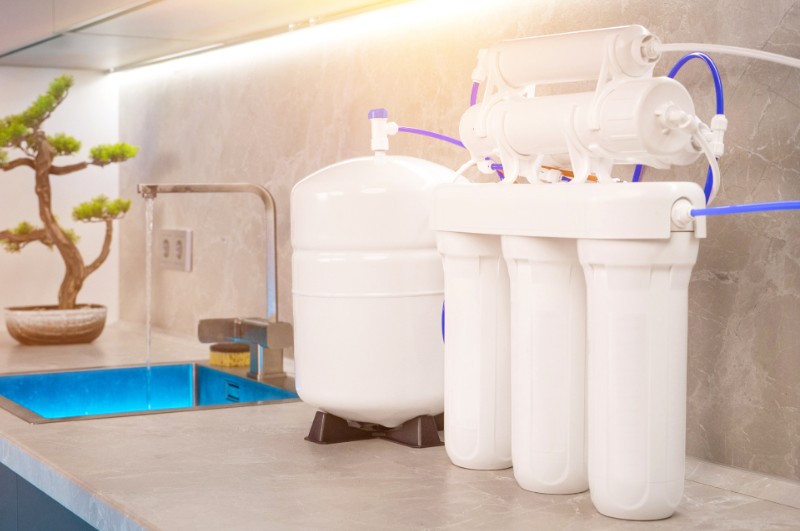
They work and there’s definitely a need for you to go ahead and use it especially if your water’s harness level is at 7 grains per gallon or higher. Softer or higher quality water makes your electrical appliances at home work better. They can improve the smell, taste, and even the overall look of your water, even.
Alternative water softeners also work. They are cheaper and far more energy efficient. They consume less water. And they are far more environmentally friendly.
They definitely work well as alternatives to regular or traditional types of water softeners at the end of the day. Check out the pros and cons of water softeners here.
Do Saltless Water Softeners Really Work?
Saltless or salt free water softeners don’t really work because the truth of the matter is that they don’t exist. The reason behind this is that sodium ions are a critical element needed in a water softening treatment in order for it to work.
They displace the magnesium, calcium, and other hard water elements that ultimately make the water hard. All kinds of water softeners and water softener alternatives will always at some point or so, use some kind of salt to remove the hard minerals from the water.
For more related articles visit our guide to what does a water softener do page.

